I need some help. I have the following table:
country_code=c(1,1,1,1,1,1,2,2,2,2,2,2)
target=c('V1','V1','V2','V2','V3','V3','V1','V1','V2','V2','V3','V3')
M1=c('X7','X7','X14','X14','X8','X8','X29','X22','X2','X22','X22','X22')
M2=c('X1','X1','X17','X11','X21','X21','X1','X29','X8','X18','X24','X24')
M3=c('NA','NA','NA','X1','NA','NA','NA','NA','NA','NA','NA','NA')
CountofRun=c(1,2,1,2,1,2,1,2,1,2,1,2)
df<-data.frame(country_code,target,M1,M2,M3,CountofRun)
and I would like to get a frequency table for each country_code and target combination. So for instance if X7 appears in all three runs for country_code=1 and target=V1, X7 needs to be summed to 3. As you will see, I am only interested in counting the number of times each of the X1 to X30 appears in those 3 runs for each of 6 combinations of country_code and target. I cannot convert to numeric.
The ultimate table, hopefully will look like this
